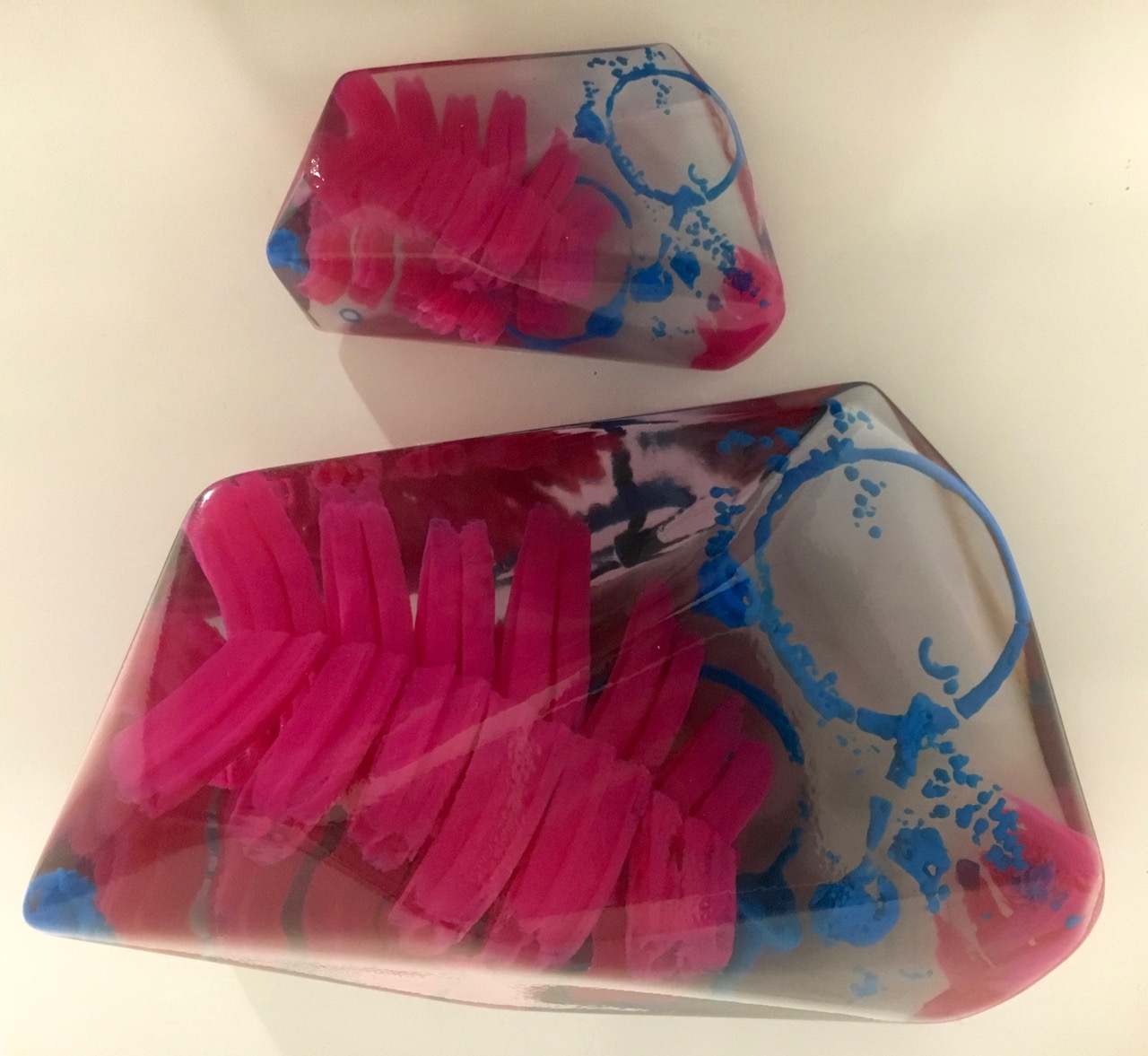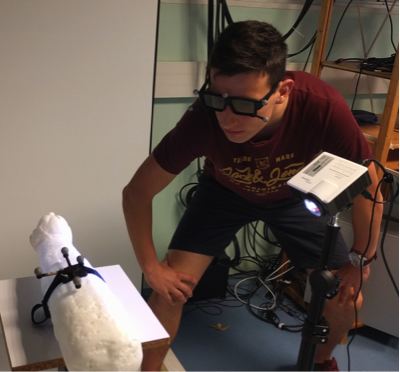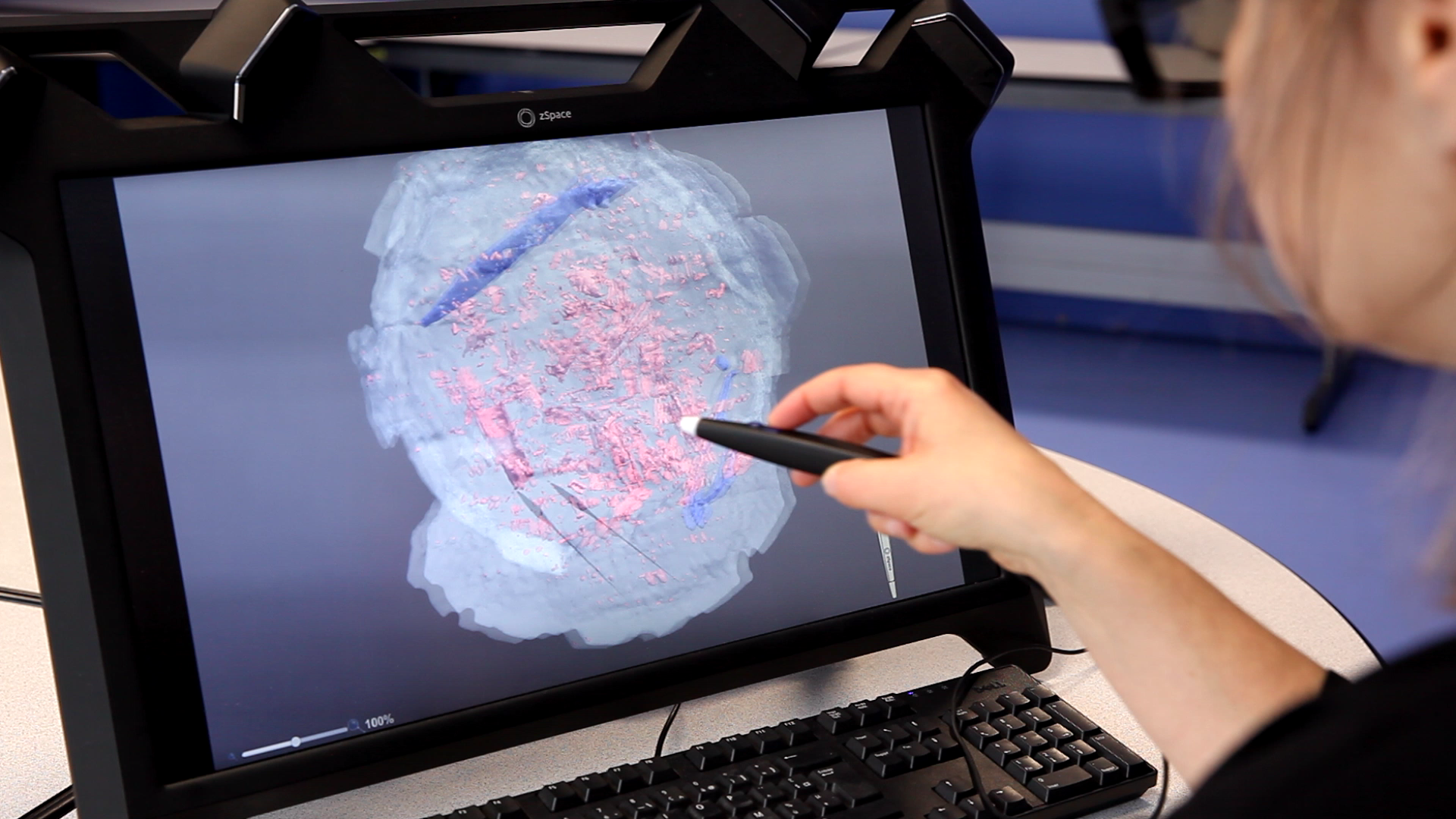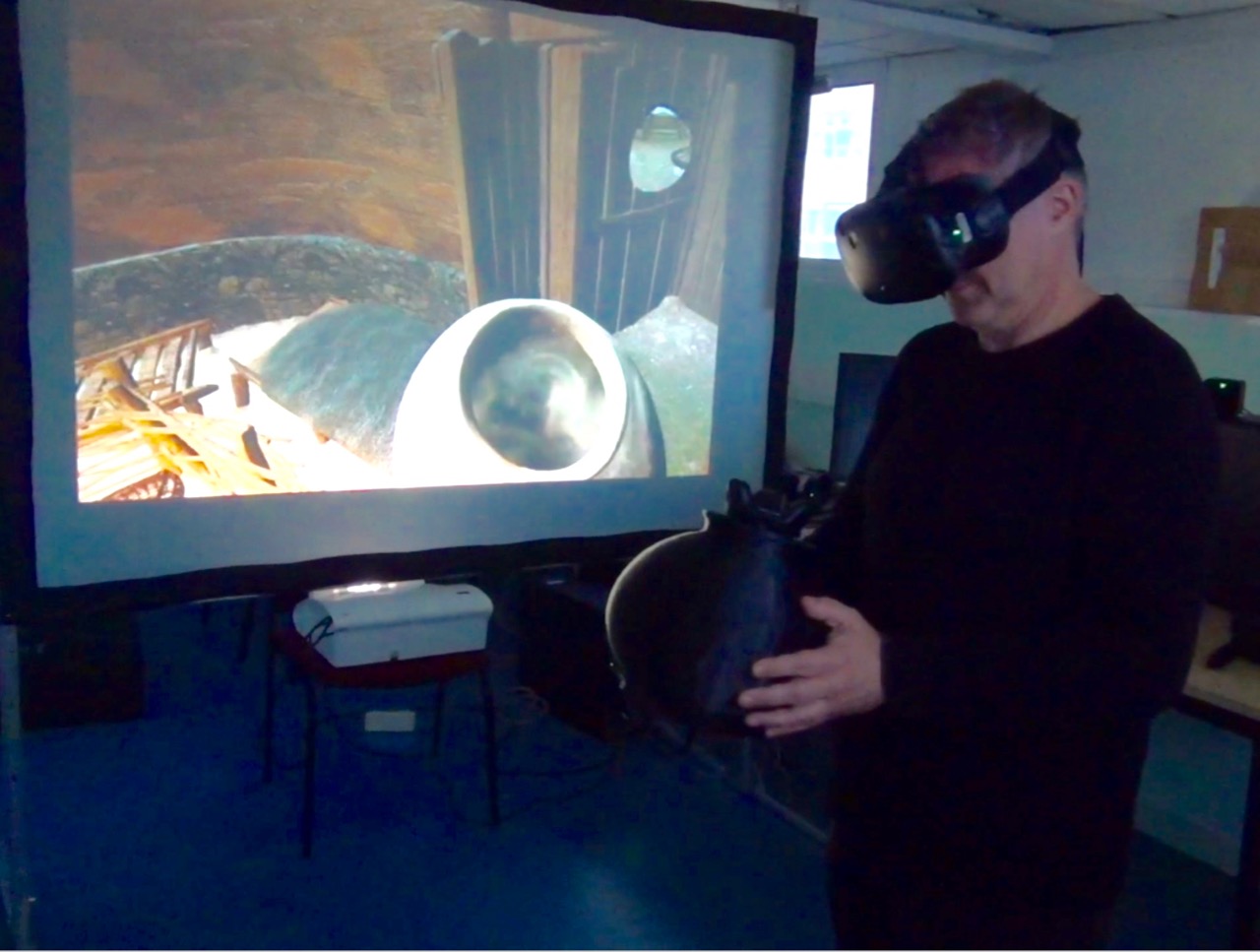Section: New Results
Cultural Heritage
Through several collaborations with Cultural Heritage partners such as archaeologists, historians, or curators, the Hybrid team has developed a methodology to propose new practices and tools in this domain. This methodology combines different technologies of digitization, such as CT scan, photogrammetry, or lidar, 3D production, such as 3D modelling or 3D printing, and 3D interactions in VR and AR.
3D Printing and AR Applications
Lift the Veil of the Block Samples from the Warcq Chariot Burial
Participants: Ronan Gaugne and Valérie Gouranton
Cultural Heritage (CH) professionals such as archaeologists and conservators regularly experience the problem of working on concealed artifacts and face the potential destruction of source material without real understanding of the internal structure or state of decay or modification of the initial context by the micro-excavation process. Medical images-based digitization, such as MRI or CT scan, are increasingly used in CH as they provide information on the internal structure of archaeological material. Likewise, additive technologies are used more and more in the Cultural Heritage process, for example, in order to reproduce, complete, study or exhibit artifacts. 3D copies are based on digitization techniques such as laser scan or photogrammetry. In this case, the 3d copy remains limited to the external surface of objects. Different previous works illustrated the interest of combining 3D printing and Computed Tomography (CT) scans in order to extract concealed artifacts from larger archaeological material. The method was based on 3D segmentation techniques within volume data obtained by CT scans to isolate nested objects. This approach was useful to perform a digital extraction, but in some case it is also interesting to observe the internal spatial organization of an intricate object in order to understand its production process. Then, we proposed a method for the representation of a complex internal structure based on a combination of CT scan and emerging 3D printing techniques mixing colored and transparent parts of an aggregate of objects (see Figure 20), with very small pieces, from an exceptional aristocratic Gallic grave in the context of a preventive archaeological investigation [39].
This project was done in collaboration with UMR Trajectoires, Inrap and Image ET/BCRX.
Digital Introspection of a Mummy Cat
Participants: Ronan Gaugne and Valérie Gouranton
In the last decade, thanks to the dissemination of novel medical imaging technologies, research on the study of animal mummies of Ancient Egypt has became more and more important, leading to a better understanding of the history and culture of this civilization. Modern 3D technologies such as virtual reality, augmented reality and 3D printing enable to enrich the research process and open innovative possibilities for scenography in scientific mediation. In [36] we focused on one particular mummy cat and proposed to combine CT scan, 3D printing and augmented reality in a global process to accompany and support at the same time a scientific study of the object and a preparation of a mediation action in a Museum (see Figure 21 and Figure 22).
This project was done in collaboration with Inrap, UMR Trajectoires, HISoMA and Musée des Beaux-Arts, Rennes.
|
VR Applications
EvoluSon: Walking through an Interactive History of Music
Participants: Ronan Gaugne, Florian Nouviale and Valérie Gouranton
The EvoluSon project [16] proposes an immersive experience where the spectator explores an interactive visual and musical representation of the main periods of the history of Western music (see Figure 23). The musical content is constituted of original musical compositions based on the theme of Bach's Art of Fugue to illustrate the eight main musical eras from Antiquity to the contemporary epoch. The EvoluSon project contributes at the same time to the usage of VR for intangible culture representation and to interactive digital art that puts the user at the centre of the experience. The EvoluSon project focuses on music through a presentation of the history of Western music, and uses virtual reality to valorise the different pieces through the ages. The user is immersed in a coherent visual and sound environment and can interact with both modalities. This project is the result of collaboration between a computer science research laboratory and a research laboratory on art and music. It was first presented to a public event on science and music organised by the computer science research laboratory.
This project was done in collaboration with the Research Laboratory on Art and Music of University Rennes 2.
INSIDE Interactive and Non-destructive Solution for Introspection in Digital Environments
Participants: Flavien Lécuyer, Valérie Gouranton, Ronan Gaugne and Bruno Arnaldi
The development of scanning technologies allowed to limit the destructiveness induced by the excavation. However, it is not enough, as the rendering is not enough to study a scanned artifact. We proposed to use virtual reality as a legitimate tool for the inspection of artifacts modelled in 3D: INSIDE [38], with tools to lead a complete virtual excavation (see Figure 24). This tool opens a new way of practicing archaeology, more efficient and safer for the content being excavated.
This project was done in collaboration with the Research Laboratory on Archeology and History, UMR CReAAH, UMR Trajectoires, and Inrap.
VR Interactions with Multiple Interpretations of Archaeological Artefacts
Participants: Ronan Gaugne and Valérie Gouranton
The incorporation of 3D printed artefacts into Virtual Reality and Augmented Reality experiences is gaining strong interest from Cultural Heritage professionals. Indeed, in most cases, virtual environments cannot convey information such as the physical properties of artefacts. In [37], we presented a methodology for the development of VR experiences which incorporate 3D replicas of artefacts as user interfaces. The methodology is applied on the development of an experience to present various interpretations of an urn which was found at the edge of a cliff on the south east coastal area of the United Kingdom in 1910. In order to support the understanding of the multiple interpretations of this artefact, the system deploys a virtual environment and a physical replica to allow users to interact with the artefacts and the environment (see Figure 25). Feedback from heritage users suggests VR technologies along with digitally fabricated replicas can meaningfully engage audiences with multiple interpretations of cultural heritage artefacts.
This project was done in collaboration with University of Brighton (UK), Inrap, CNRS and UMR CReAAH.








